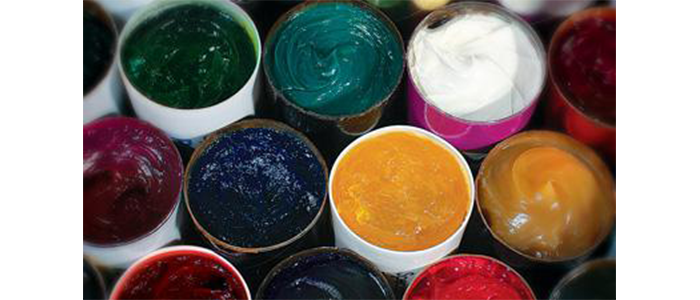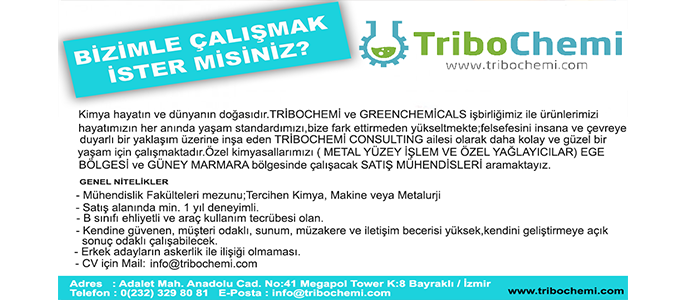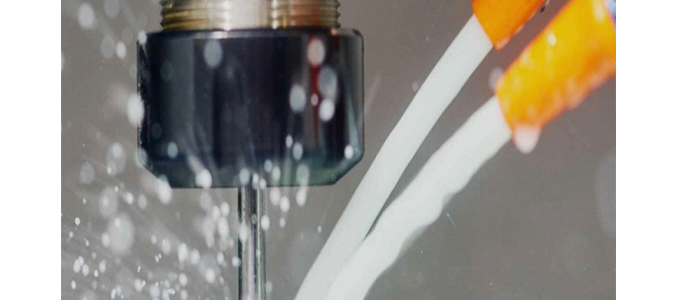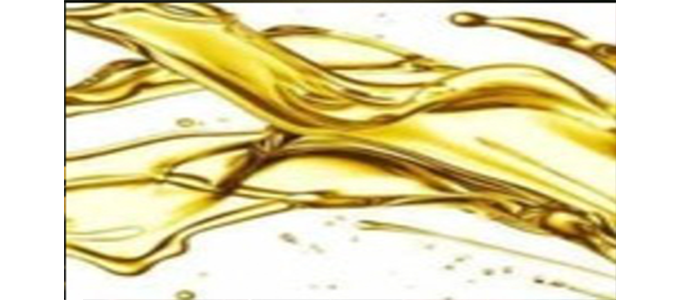- 0(532) 264 90 28
- info@tribochemi.com

The Importance of Machine Oils
GENERAL INFORMATION ABOUT LUBRICATION AND TRIBOLOGY
What is Lubrication?
To reduce the amount of force between moving objects with less energy loss.
What are the Benefits of Proper Pouring?
To prevent erosion,
To overheat,
To swallow a sudden jerk, make a depression between the jerk,
Corrosion,
& Lt; / RTI & gt; . (1)
What is the recommended?
It is the name given to the force that forms between the two objects in contact and resists the action. The movement of this force does not require movement, but the kinetic (kinetic) force when it is in motion is different (static) when it is not in motion. (2)
What are the equals?
Dry clean: The finished parts of the cleaning elements are thoroughly cleaned and not lubricated.
< Particulate Layer: Particulate matters are coated in tight contact with reaction layers or solid lubricants.
Mixed Rendering: Some of the elements of the Rendezvous elements are in contact. Wear is generally acceptable.
Limit Sme rme nme: The smeared parts are tightly in contact with each other and coated with a thin lubricant film. Wear is the amount of wear.
Fluid Resistant: All of the painted oils are completely separated by oil film.
& nbsp; What are the Meanings of Abbreviations for Food-Compatible Oils?
USDA: United States Department of Agriculture
NSF: Nonfood Compounds Registration Program
H1: It has the characteristics of food and has the ability to & ndash;
< H2: & nbsp; & nbsp; n & ndash;
<
In general,
You can use it in the food end-user & ldquo; permission & rdquo;
Do not damage health
Must be tasteless, odorless, colorless.
What are the Components of Lubrication Oils?
Composition of oils offered in use consists of two ingredients:
BASE Oils, which constitute about 99% of the composition,
Contribution
The base part determines the type of oil to be formed while the additives help to bring the technical properties of the oil to the desired values.
What is the equivalence of the machine oil? What are the Advantages and Disadvantages?
1. Advantages of Mineral Oils & ndash; What are the disadvantages?
BENEFITS; & nbsp; & nbsp; & nbsp; DISENGALS;
& Middot; There are "n" viscosities & nbsp; & nbsp; & Nbsp; & middot; The characteristics of these temperatures are poor.
& Middot; Lubrication is good & nbsp; & nbsp; & Nbsp; & middot; It is not resistant to oxidation and aging at high temperatures.
& Middot; Additive is easy (corrosion & viscosity, viscosity improver, EP etc.) & nbsp; & nbsp; & Nbsp; & middot; Max. Used up to 100 & deg. C
& Middot; Sealing (NBR, EPDM) and anti-dripping coatings are available in & nbsp; & nbsp; & Nbsp; & middot; Viscocity-temperature behavior is poor.
& Middot; Cheap is. & Nbsp; & nbsp; & Nbsp; & middot;
& Nbsp;
2. What are the Advantages and Disadvantages of Synthetic Oils?
BENEFITS; & nbsp; & nbsp; & nbsp; DISENGALS;
& Middot; The frozen point is & nbsp; & nbsp; & Nbsp; & middot; Care must be taken to ensure compliance with seals and other materials
& Middot; If you have a problem with the & nbsp; & nbsp; & Nbsp; & middot; Availability is more difficult
& Middot; Viscosity-temperature relationship is good (widely used temperature range) & nbsp; & nbsp; & Nbsp; & middot; Gratification
& Middot; Long aging resistance (long wearing) & nbsp; & nbsp; & nbsp; & Nbsp; & middot; Prices are more important
& Middot; Oxidation resistance is good (at high temperatures) & nbsp; & nbsp; & nbsp;
& Middot; Some types are & nbsp; & nbsp; & nbsp;
& Middot; Some synthetic oils are standard on food grade oils & nbsp; & nbsp; & Nbsp;






